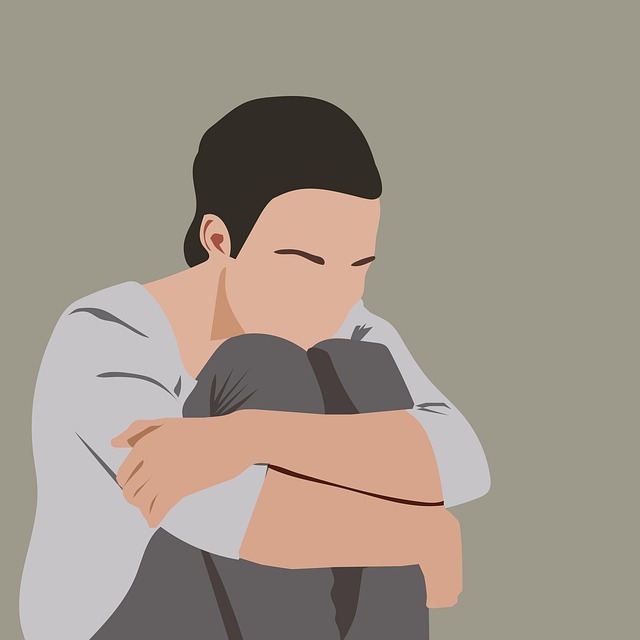Nurturing Emotional Well-being: Strategies for Adolescent Mental Health
Emotional intelligence (EI) is a powerful tool for adolescent development, especially for girls and…….
Postpartum depression (PPD) is a complex and often undiagnosed mental health issue that can profoundly affect adolescent teens, particularly in the absence of specialized support. This article delves into the world of therapy tailored for this vulnerable population, exploring its various aspects, benefits, and challenges. By understanding and addressing PPD in adolescents, we can significantly improve their overall well-being and set them on a path to a healthier future.
Therapy for adolescent teens with postpartum depression involves a range of evidence-based psychological interventions designed to help individuals aged 13-19 who have experienced PPD. This therapy aims to alleviate symptoms, improve coping strategies, and enhance overall mental health. It recognizes the unique developmental stage of adolescence and adapts treatment methods accordingly.
The concept of treating PPD in adolescents has evolved over time, gaining prominence in recent years due to increased awareness and research. Historically, mental health issues were often overlooked or stigmatized, especially during adolescence. However, modern therapy practices now emphasize early intervention and tailored support for this demographic. This shift is evidenced by the growing body of research and dedicated clinical guidelines for PPD in teens.
PPD affects teenagers worldwide, with varying rates across regions. According to a study by the World Health Organization (WHO), an estimated 13% of women globally experience PPD, and when extended to adolescents, this figure may be even higher due to unique risk factors during this period of significant neurodevelopmental changes.
Key Trends:
Regional Impact:
| Region | Prevalence Rate (%) | Unique Challenges |
|—|—|—|
| North America | 12-15 | High cost of therapy, underinsurance |
| Europe | 10-18 | Stigma, access to specialized services |
| Asia Pacific | 15-20 | Cultural taboos, limited mental health resources |
| Middle East & Africa | 10-12 | Limited research, cultural barriers to seeking help |
The economic impact of PPD in adolescents is significant, with both direct and indirect costs associated with treatment and potential long-term outcomes.
Private investments in mental health technology and telemedicine have increased, recognizing the potential for wider access to care. This trend is particularly prominent in North America and Europe. Government funding for adolescent mental health services also varies across regions, with some countries investing heavily in prevention and early intervention programs.
Technology plays a pivotal role in modern PPD therapy for teens, enhancing accessibility and personalized treatment:
Policies and regulations significantly influence the availability and quality of PPD therapy for adolescents:
Despite its potential, PPD therapy for teens faces several challenges:
Proposed Solutions:
Sarah, a 16-year-old from a suburban area, experienced PPD after the birth of her sister. She became withdrawn, struggled in school, and had intense mood swings. Through family therapy and CBT, Sarah learned coping strategies to manage her symptoms. With support from her parents and therapist, she gradually improved and reconnected with her friends. This case highlights the effectiveness of tailored therapy in helping teens navigate PPD.
Jason, a 17-year-old from a rural community, was diagnosed with PPD after experiencing a sudden change in mood and energy levels. He initially resisted therapy but eventually opened up about his struggles. Using mindfulness techniques and IPT, Jason improved his social interactions and academic performance. This case demonstrates the importance of culturally sensitive and accessible therapy options for adolescents.
The future of PPD therapy for teens looks promising with several growth areas and emerging trends:
Therapy for adolescent teens with postpartum depression is a critical aspect of addressing mental health issues in this vulnerable population. By understanding its components, global impact, and challenges, we can advocate for improved access and quality of care. The future holds great potential for personalized, effective treatment, ensuring that adolescents receive the support they need to thrive.
Q: What are the warning signs of PPD in teens?
A: Common symptoms include persistent sadness, mood swings, loss of interest in activities, changes in appetite and sleep patterns, fatigue, feelings of worthlessness, and difficulty concentrating.
Q: How do I know if therapy is right for my teen?
A: If your teen is experiencing PPD symptoms that interfere with daily life, social interactions, or academic performance, therapy can be highly beneficial. Consult a mental health professional who specializes in adolescent PPD.
Q: Can PPD in teens be prevented?
A: While not all cases can be prevented, early identification and intervention through educational programs and support systems can significantly reduce the risk or severity of PPD.
Q: Are there any side effects to therapy for PPD in adolescents?
A: Like any treatment, therapy may have some temporary side effects like increased anxiety or emotional distress during certain sessions. However, these are usually mild and short-lived. Serious side effects are rare.
Q: How can I support my teen undergoing PPD therapy?
A: Be supportive, educate yourself about PPD, encourage open communication, and ensure your teen feels heard. You can also help by creating a structured routine, promoting healthy habits, and assisting with transportation to therapy appointments.

Emotional intelligence (EI) is a powerful tool for adolescent development, especially for girls and…….